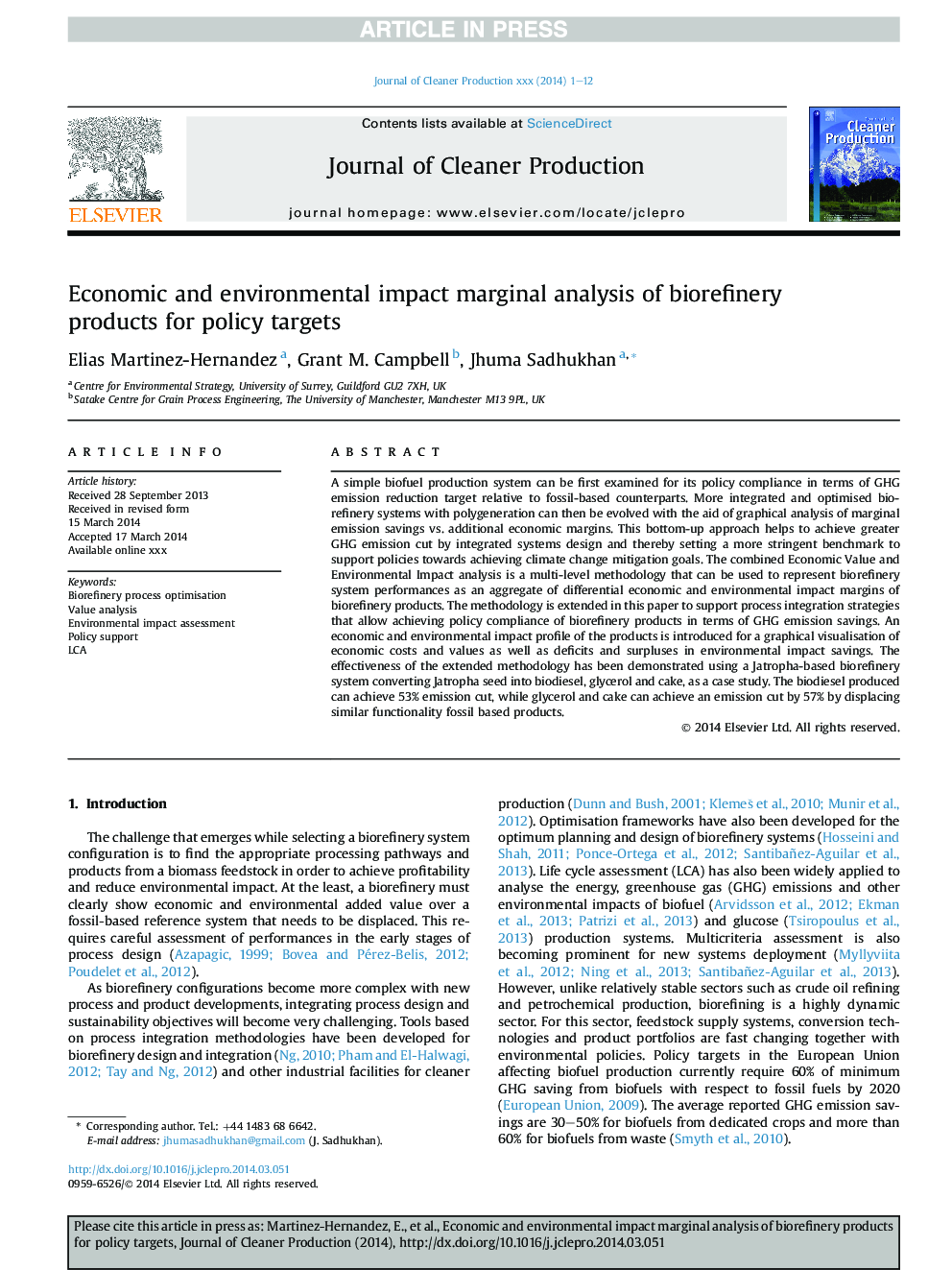| Article ID | Journal | Published Year | Pages | File Type |
|---|---|---|---|---|
| 8106222 | Journal of Cleaner Production | 2014 | 12 Pages |
Abstract
A simple biofuel production system can be first examined for its policy compliance in terms of GHG emission reduction target relative to fossil-based counterparts. More integrated and optimised biorefinery systems with polygeneration can then be evolved with the aid of graphical analysis of marginal emission savings vs. additional economic margins. This bottom-up approach helps to achieve greater GHG emission cut by integrated systems design and thereby setting a more stringent benchmark to support policies towards achieving climate change mitigation goals. The combined Economic Value and Environmental Impact analysis is a multi-level methodology that can be used to represent biorefinery system performances as an aggregate of differential economic and environmental impact margins of biorefinery products. The methodology is extended in this paper to support process integration strategies that allow achieving policy compliance of biorefinery products in terms of GHG emission savings. An economic and environmental impact profile of the products is introduced for a graphical visualisation of economic costs and values as well as deficits and surpluses in environmental impact savings. The effectiveness of the extended methodology has been demonstrated using a Jatropha-based biorefinery system converting Jatropha seed into biodiesel, glycerol and cake, as a case study. The biodiesel produced can achieve 53% emission cut, while glycerol and cake can achieve an emission cut by 57% by displacing similar functionality fossil based products.
Related Topics
Physical Sciences and Engineering
Energy
Renewable Energy, Sustainability and the Environment
Authors
Elias Martinez-Hernandez, Grant M. Campbell, Jhuma Sadhukhan,
